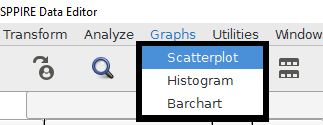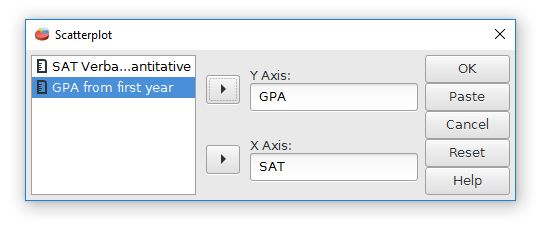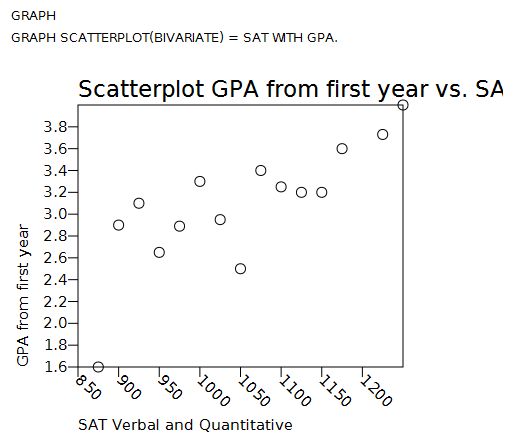
This work is licensed under a Creative Commons Attribution 4.0 International License that allows sharing, adapting, and remixing.
A descriptive graphing approach to examining relationships between variables is the scatterplot. This graph is made from data where each person has two measured variables. Our example for this kind of data will be the commonly used textbook example for screening college applicants. Each student has a standardized test score (SAT, ACT, etc.) and grade point average from their first year of college. The relationships from these past institutional data can be used to help screen new applicants who are applying to college.
The example data file has fifteen students, with a SAT score and a first year college GPA for each student. This data file can be downloaded as relationshipData.sav. Please keep in mind that the data is fictitious data that were created for the purpose of illustrating the use of the software.
Start by going to the Graphs menu and then select the Scatterplot command.

The Scatterplot dialog box has fields for the X and Y variables that must be selected. It is matter of judgment about which variable should be X or Y. A useful guide is to select the potential causal variable or first variable for the X axis. For our scatterplot we will select SAT because this test was taken before the first year grades were available.

The scatterplot is displayed in the output viewer, like this:

Each individual is represented by one data point. The intersection of the X and the Y variable for each person is represented by a dot. The pattern in this example tends to move from the lower left to the upper right. This shows a positive relationship in which people with higher SAT scores tend to have higher GPA scores. Both variables tend to increase together, making this a positive or direct relationship.
Index | Next - Correlation coefficient

This work is licensed under a Creative Commons Attribution 4.0 International License that allows sharing, adapting, and remixing.